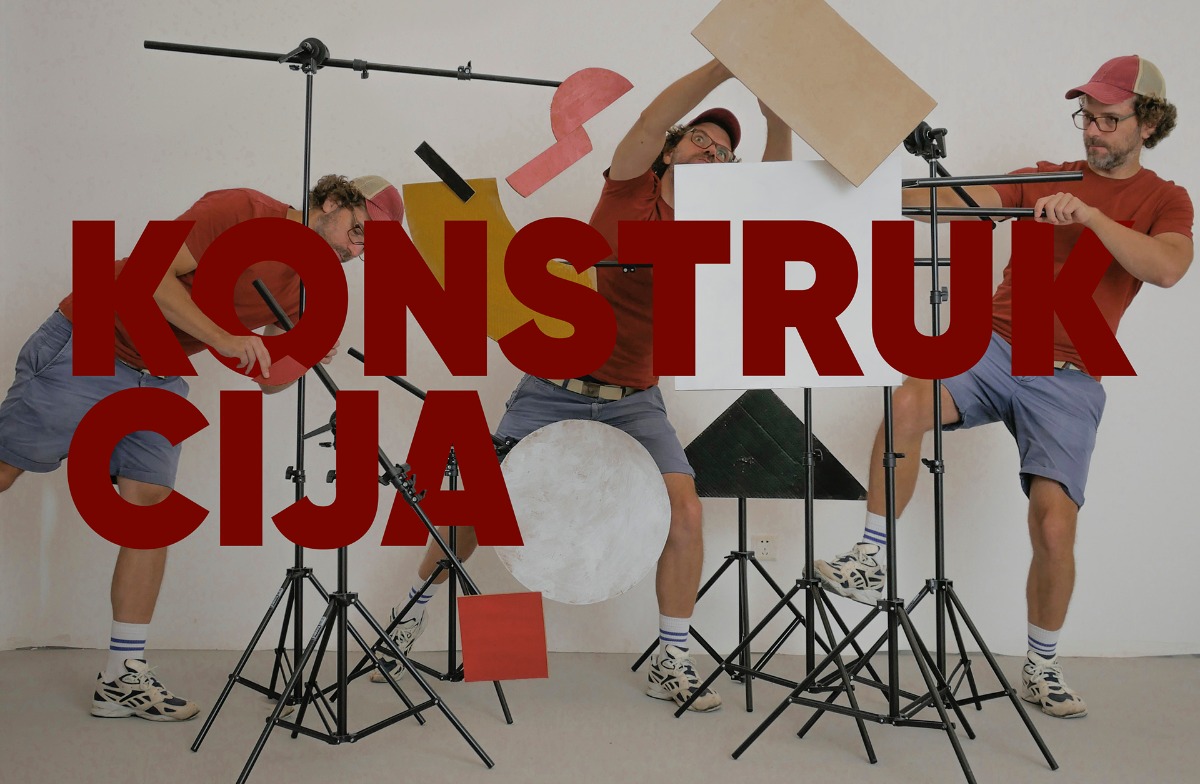
Today, I Decided Not to Save the World
A conversation with Latvian artist Krišs Salmanis
A year ago, Krišs Salmanis’ “Tutto splenderà! Ah!” – a video inspired by the Giacomo Puccini opera “Turandot” whose main heroine is a Chinese princess – was exhibited at the “Alma” gallery. The video piece which shows a fair eastern beauty starting to sing as the spectator approaches the screen was created by Salmanis during his stay at an art residency in China.
Currently, the “Alma” gallery in Riga is housing his solo exhibition “Construction” whose works were created almost simultaneously with the art for his previous exhibition. Salmanis conceptually integrates the geometric precision characteristic of Western modernism with the doctrine of modernist ideas still surviving in China.
Exhibition “Construction” at the “Alma” gallery 
Krišs Salmanis stands out among his contemporaries in Latvian art as an emotional conceptualist. His works, no matter how saturated with information, never fall into excessive and snobbish intellectualism. They are accessible in the best sense of the word – when experiencing Salmanis’ works and considering their message, the spectator will be assured that the artist sees his main task to be the expression of his own moving experiences and impressions in the most precise material form. For Salmanis, visual codes act as tools for articulating personal experiences, and, ideally, the viewing of his art will result in ruminations on the same subjects that preoccupy the artist himself.
When reviewing your art from the last few years, I arrived at the conclusion that you are frequently staying at art residencies outside of Latvia. Several of your recent works have been created in residencies. Is it just a coincidence, or are you consciously determined to step outside to create art?
Thankfully or unfortunately I have never ended up in a residency by accident. It is, indeed, a rather intentional process. It changes from year to year, but in general, I apply to residencies often. On average three to ten residencies a year. I think only one of them has reached out to me first. Apart from the recent one in New York. This opportunity was given to me thanks to the Contemporary Art Center “Kim?” residency award.
Some artists prefer working in solitude. For instance, at their workshop – a space convenient and familiar to them. You, it seems, are not one of those artists.
In a way, yes. When I am in a state of mind where everything seems good and satisfactory, I feel the need to leave my ordinary environment. Not because something is terribly wrong with it but because I have to see what things are like elsewhere. My desire to work in residencies comes from an entirely simple wish to see something new. And, after all, in those residencies, you are not entirely alone living like some hermit. There are other artists nearby with their unique experiences. Friendships or professional relationships are often formed. Venturing out to a residency is as important as travelling in general. As a student, I visited museums and galleries in various countries and I realised quite soon that I want to travel in a way that allows me to get accustomed and explore the environment around me rather than just spending a couple of days there and leave. I want to live abroad for some time – it also means work. You see, such residencies in my line of work are exactly the perfect solution. Being in such a residency for a couple of months gives you enough time to create something. Sometimes you even get bored of the place, and even that can be good. It can be an opportunity to see what people who live there day to day see, as opposed to seeing just the beautiful and nice parts that tourists get to see. It usually is a valuable experience.
So you leave as soon as you reach this satisfactory frame of mind?
Yes, I suppose it is connected to some sort of contentment. I guess, it is healthy to know that everything is good at home overall because we are so used to complaining and assuming that our neighbours have it so much better than we do. But I have to venture outside to shake myself up.
Exhibition “Construction” at the “Alma” gallery 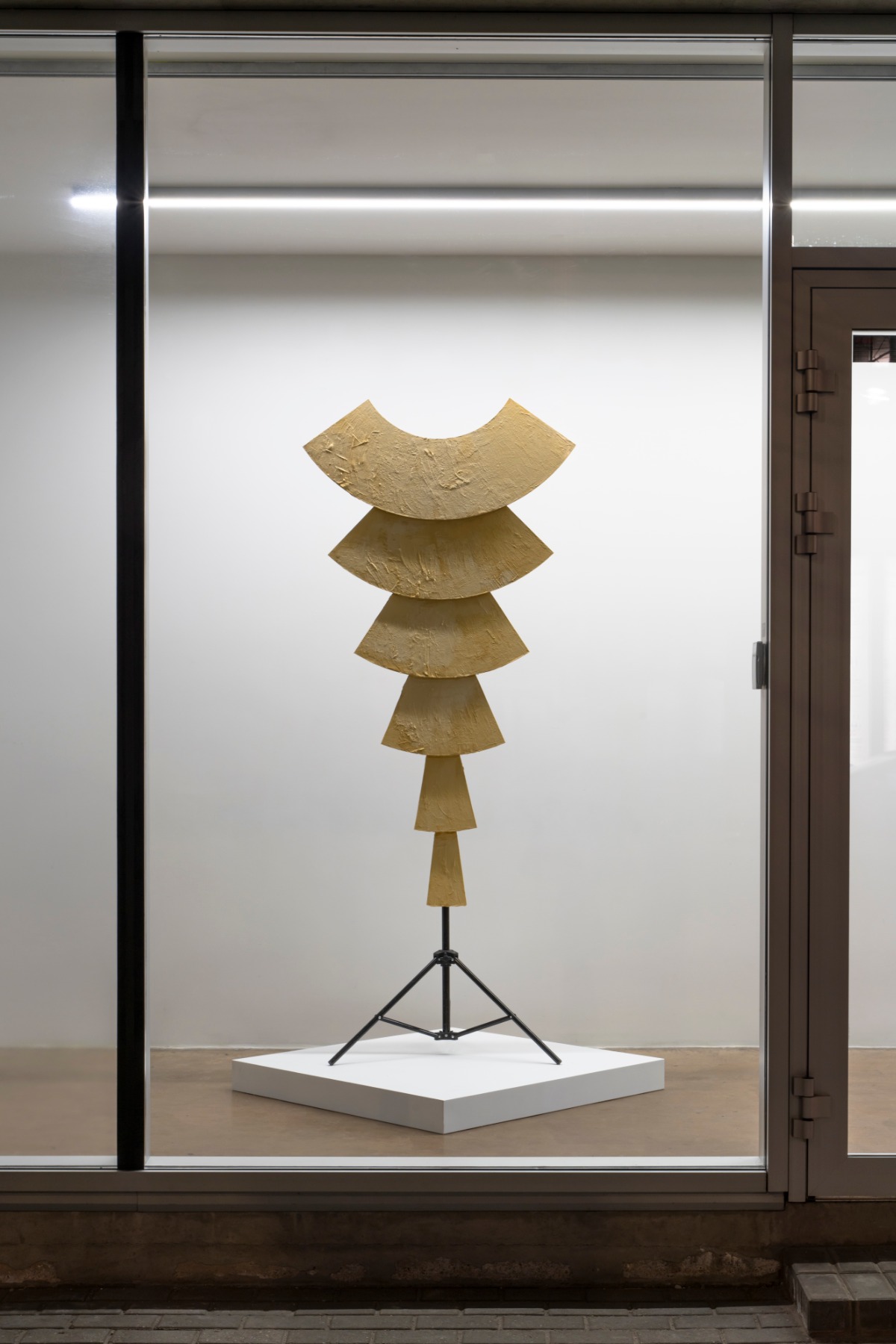
What has been pulling you towards the East in recent years?
It is just a coincidence. They were willing to take me in and I was happy to go. Both the Japanese and Chinese residencies were great because I did not go straight to the capital cities and widely known cultural centres. Had I gone there as a tourist, I doubt I would have ended up in Sichuan. As a kid, I learned of the play called “The Good Person of Szechwan”. That’s all I knew about it, but it is a major province in China with its own particular type of opera. I could say the same about Japan – I would unlikely have travelled to the Shikoku island on my own. I would probably have gone straight to Tokyo or Kyoto that I was lucky to see during my residency. Japanese countryside turned out to be a magnificent experience. I don’t speak of it too much lately, but for a while, I was thinking and talking about Japan daily. I had a really great time there. Just a very, very lovely time. I have heard more than once that Latvians compare themselves to the Japanese. All that abstinence, grey aesthetic, poeticism, etc. When my friends used to say that, I tried to object, but when I returned from Japan, I had arrived at the conclusion that we would be almost like the Japanese if everything had gone well in Latvia – in terms of taste, politeness, and mentality. There are things we share. When I was a child, people in the countryside used to say hello as they passed each other on the side of the road. In Japan, it is still the case.
It is still the case in Latvia, too. I assume, depending on the region, but I have observed it myself.
It seems to me that nowadays people first assess if the person is worth greeting or not. It used to be a behavioural norm. My parents taught me this.
It might be connected with excessive reservedness and shyness. In other words, steering clear from tactlessness.
It could be. The Japanese have ritualized their etiquette and behaviour more. We have all heard of the bowing but while staying in Japan, I had to pay close attention to the rules of interaction. How low to bow, how long, where to place my hands... It is all rather regimented yet at the time it never felt forced or robotic. Bowing is as simple there as smiling at someone.
Exhibition “Construction” at the “Alma” gallery 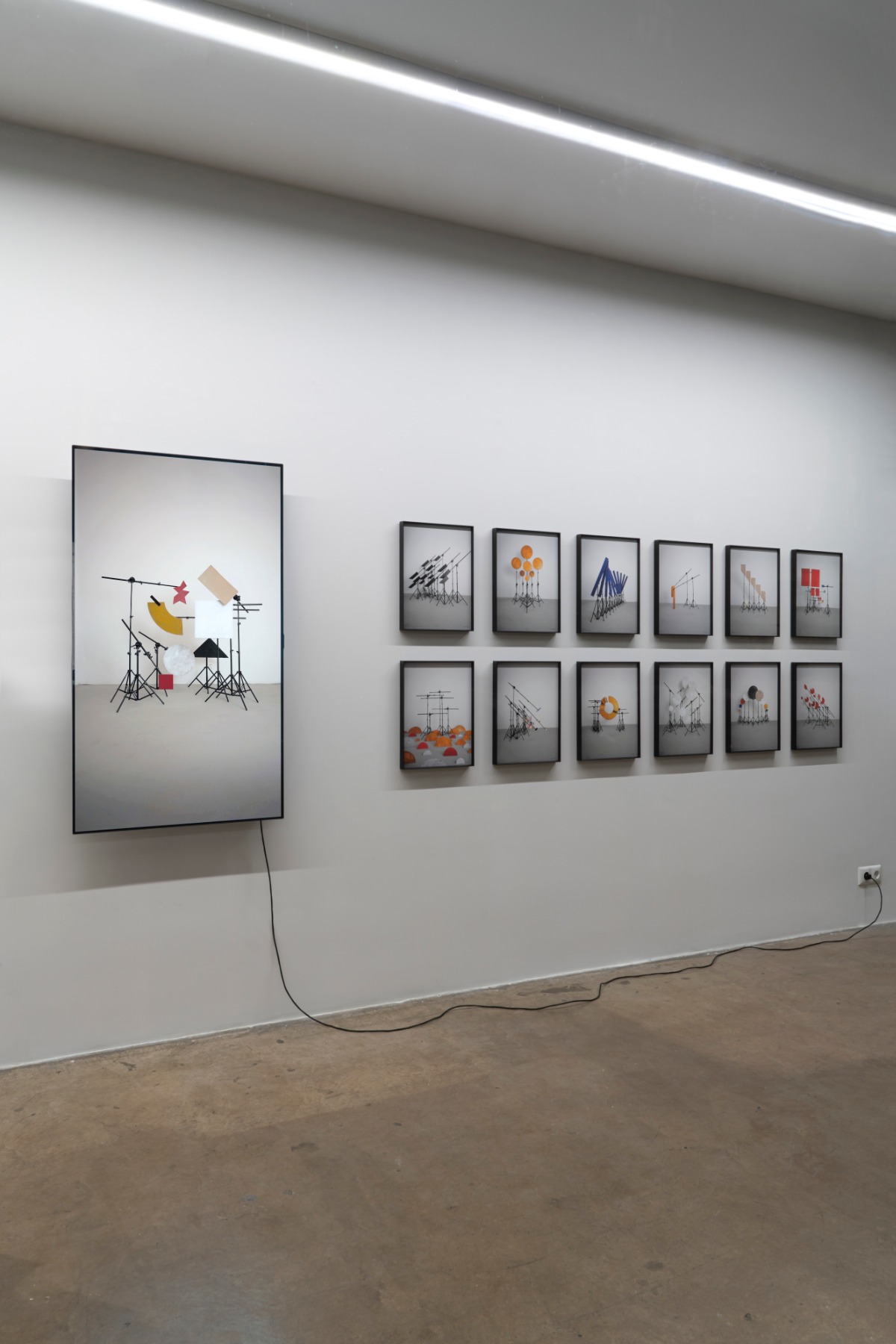
I wrote about the work you once made in Japan titled “Skilando” but I recently realized I haven’t discussed it with you. It really spoke to me. What inspired that piece? If I remember correctly, you filmed it in an abandoned factory.
No, it was an abandoned hotel! Shikoku has a lot of beautiful locations. Old, desolate temples, schools and all kinds of buildings. They took us to see different places and we could pick which to work at. Every place I went to immediately felt like the right one. I remember the old sake brewery, the theatre with the wonderful painted ceiling. When we arrived at the hotel, the hosts treated us to dinner. But the hotel itself was like a huge monster on top of a hill. A reinforced concrete building currently only inhabited by its owners. But artists also stay there at times. Built as a grass-skiing resort, it has been repurposed as a trout farm – this way the owners are hoping to keep the hotel alive. The building is not entirely finished. Some rooms are fancy, others are used as storage rooms. I see it as a weary monster sleeping in the forest among trees. I wanted to create a portrait of this building. If I was a documentarian, I would make a documentary about it. It took me some time to understand that I am allowed to be a documentarian. More specifically, I am allowed to pretend to be one. Like other artists who pretend to be chefs, for example. The second thing that inspired me to create this work was the local puppeteering art that is known for its use of different monsters. This tradition is very much alive in the village we were staying in. There were rehearsals and plays. I was able to try out the dolls myself – they have beautiful mechanics. A single hand movement can turn a charming Japanese girl into an evil spirit. I made a couple of doll mockups of my own. I hired two of their theatre actors for filming and this work was born. They were extremely patient. I was pushing them in all kinds of directions. We spent about a week getting it all done.
This work was greatly inspired by the environment you were in. Last year, the “Alma” gallery was hosting your “Tutto splenderà! Ah!” inspired by “Turandot” and your China travels. “Construction” was also born during your residency in China. How has China influenced you overall?
The impression I got was rather banal. My works, it seems, also show this. One such banality is that they have cool people everywhere. You can meet them in the deepest countryside of Japan and in the wildest and largest cities of communist China. I have finally become certain that the time I spend in a residency will always result in me creating a new work of art no matter how unsure I am of it before leaving. I cannot be certain for the quality of work or exactly what I will be making but I know that after all the anxiety something will come out of it.
By the sound of it, you have found a method for creating art.
Maybe, yes. I had not thought about it this way until now, but you could call it a method.
I am more curious about how the impressions you got in China are reflected in the works exhibited, let’s say, in the “Alma” gallery.
Everything is very simple there. I’m afraid I won’t be able to say anything more complicated than the annotation I have provided. These works reflect my attempts to adapt to life in China and live as a Chinese citizen. I tried to integrate aspects of the local life into my daily rhythm.
Krišs Salmanis. I go fast...
How did you do it? What does an attempt to live like a Chinese person look like?
I tried to walk slower and eat faster. I tried standing on an escalator rather than running up the stairs like I am used to. When I was walking up the stairs of an empty escalator, a guard actually reprimanded me.
Krišs Salmanis. ...but eat slowly
It seems like a rather conscious choice to change your daily rhythm and subject it to the rules that dominate the environment around you. What do you take away from it?
It is just another way to try to enjoy being in a foreign place. It is probably cheaper to travel that way, too. You can take cabs everywhere but it’s cheaper and more interesting to take the metro with other people. Taking the bus is the best. Crossing the street was pretty scary. The streets are full of people and all sorts of small electric vehicles that you cannot hear coming. Constant motion. Everyone is gently flowing and crossing each other, expecting to be able to predict each other's next move. Once I was crossing the street hesitantly and almost had a lady fall off her motorcycle. In this case, it really is a working method that I presented to the representatives of the residency. At first, I was about to make several short animations about all the uncertainties I experienced living in China. I ended up with one average length animation and twelve photographs.
Did this way of life come with a sense of discomfort?
I get grumpy at times, but it depends on my mood.
Do you still get the sense that you are residing in an authoritarian state?
I haven’t fully understood this yet – how this communistic authoritarian state goes together with the rather brutal capitalism that has taken over China’s largest cities.
In my opinion, it all makes sense. China is, after all, trying to weed out western individualism. Communism, it turns out, is compatible with the free market while being incompatible with individualism.
I guess it depends on which people we are talking about. I know that the Chinese government has lifted a great number of people out of poverty. I got the impression that the city I was living in had a pronounced middle class. My assistant, however, opposed me saying that it is mostly overrun by extreme poverty.
Krišs Salmanis. No one looks into my eyes except for cameras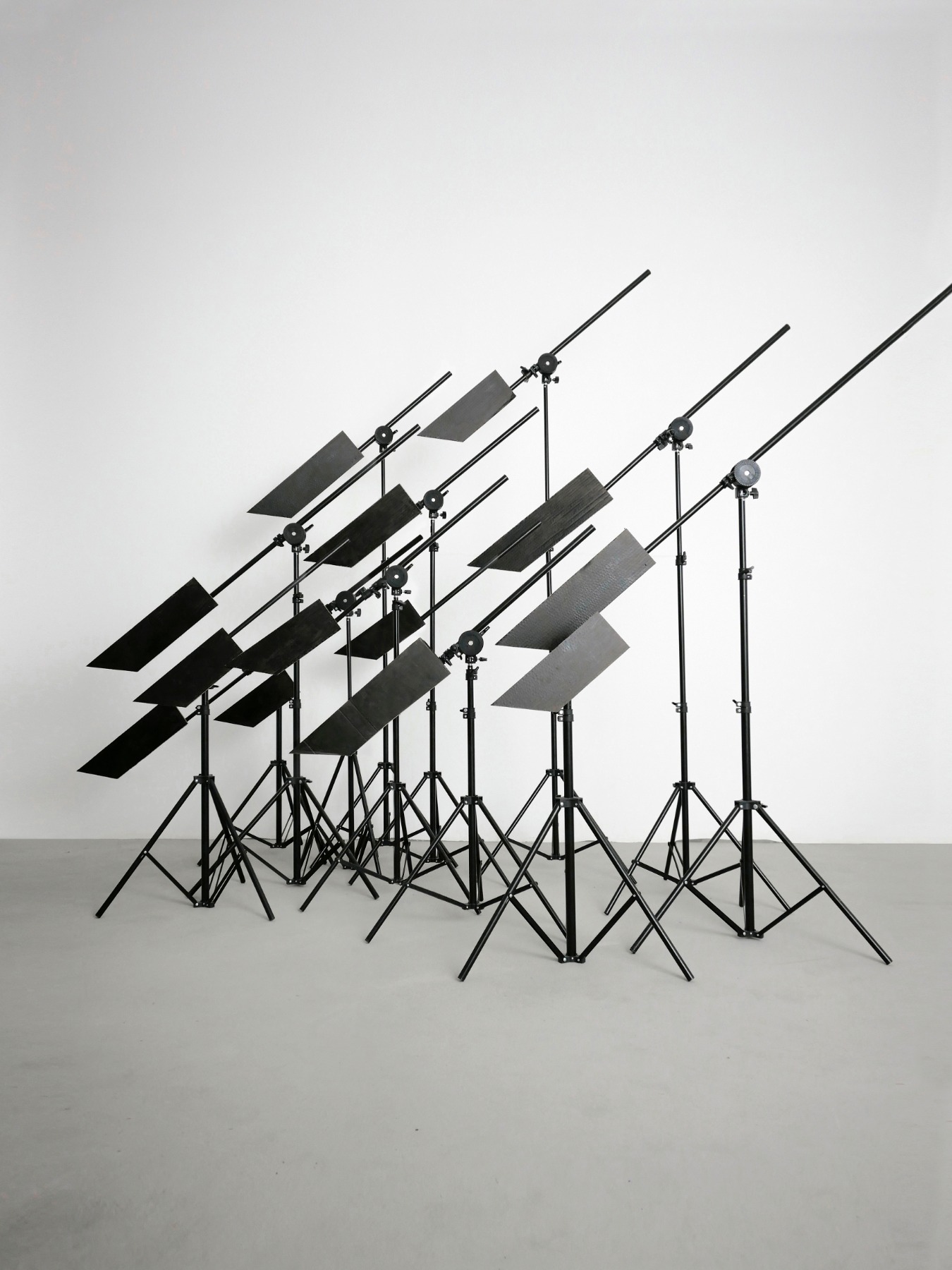
Are you suggesting that all those journalists in the West who compare China to something borderline Orwellian are exaggerating?
No, no. I wouldn’t say so... You can certainly feel authoritarianism in China, for instance, when going online. It is well known that access to Western social networks is restricted there and I even had to pull some strings to get my own e-mail address. My hosts at the residency advised me to get a good VPN before arriving. That’s what I did. That allowed me to watch, let’s say, BBC programmes, which I don’t do at home. Ironically, I watched a series on the “re-education” of Uighur Muslims while in China. At the time I thought – had I known all this before, I wouldn’t have applied for the residency. I suppose, I sometimes feel like some wide-eyed westerner who’s visited the Soviet Union for a couple of days, returns home to tell people it’s not so bad. The exhibition features a work called “Nobody looks me in the eyes, except for cameras”. Surveillance cameras really were on every corner – entire bouquets of them. And every person has a personal supervisor on them at all times – their phone. A genius invention that you crave to be using, not revolting against, despite knowing or suspecting that it is spying on you. Loving the Little Brother.
Did these insights at any point urge you to critically assess the place you were staying in?
Certainly not in terms of activism. I am not good at that sort of thing and I don’t feel that to be my strong suit or something I am interested in. My sister once saw an exhibition titled “Today, I decided not to save the world”. It’s a resolution I could attribute to my art as well because it is not in my power to save the world and I don’t see it as my job. Especially in art. I am interested in experiencing things and trying to see if I can create something out of them.
Is anyone naive enough today to believe that art can change the world?
I don’t know if it is possible, but there are a lot of socially active artists out there. I don’t always think they are making interesting art but that’s fine. Some artists are effectively activists with creative approaches. I have been in several residencies full of activists who see food preparation or planting vegetables as a part of their creative process. Some artist communes believe that by working together they can kindle something in society altogether to change the prevalent attitudes and the order of things. At the Stroom art centre in the Hague, I encountered a system that is more effective than time and money. An hour of your work buys you the right to use someone else’s work for an hour.
In your art, you stick more to self-reflection, articulation of impressions and experiences, is that right?
Most likely, yes. I think it might be even simpler than that with me. I find myself rather boring. Therefore, to make my brief moment of existence more interesting, I make art.
What do you mean by “boring”? We often think of things as boring if we encounter them frequently, trivial things.
In my daily life, I am a typical citizen. I try to live properly, eat well and do everything to see my children grow up healthy. When I feel the need for something more, I make art.
What a healthy outlook. No extra pathos.
My sister and I recently decided that in the next interview we give together, if asked whether art can change the world, we will reply with conviction that it certainly can. We could not, however, agree on the right arguments to support the statement.
Krišs Salmanis. Flags versus road signs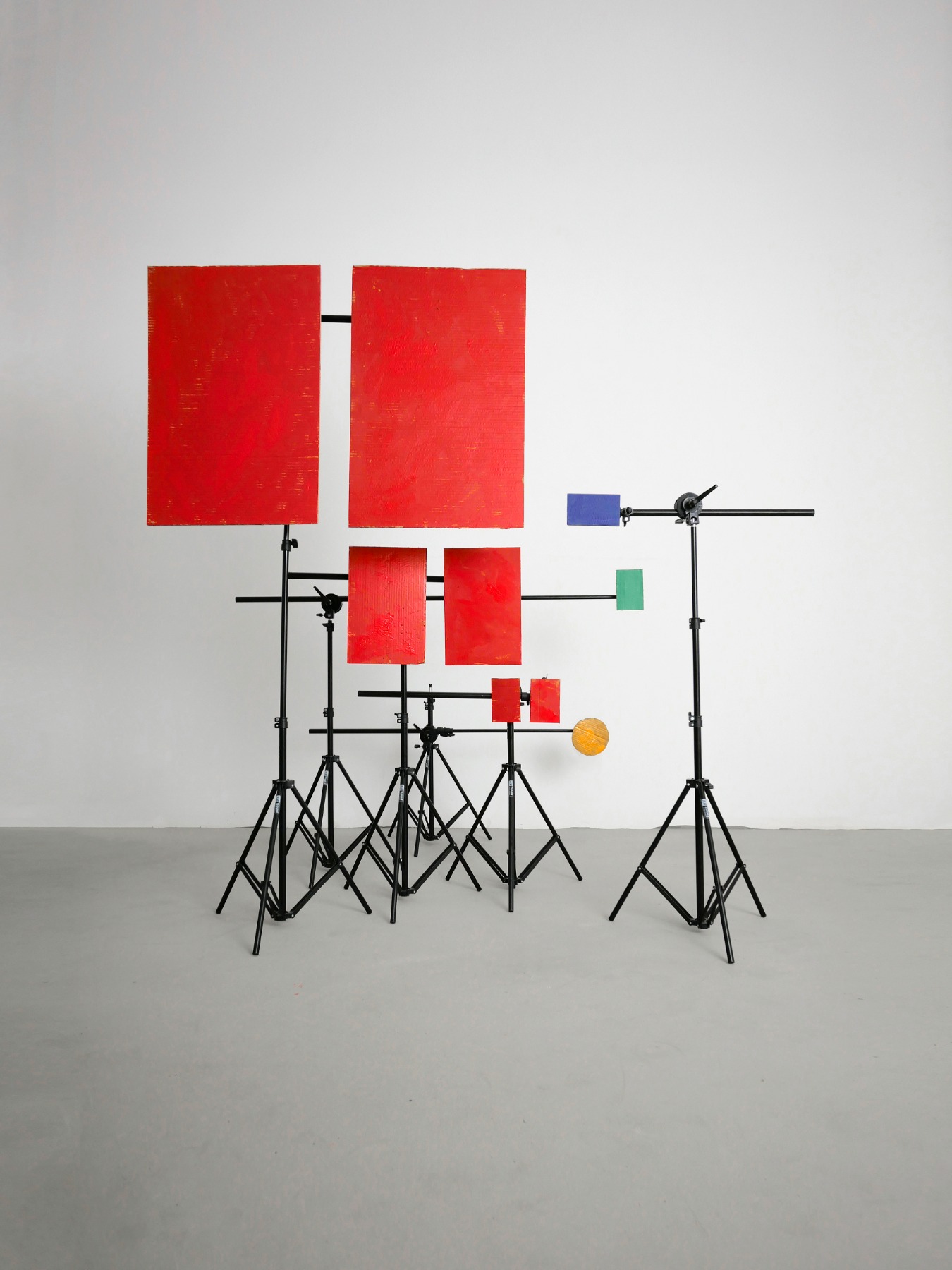
Art, I presume, can be a more or less powerful catalyst for setting certain social processes in motion.
In all seriousness, I am certain that art is a tool for encouraging tolerance. I often encounter art that I don’t get or even find wildly distasteful. But I always try to convince myself that approaches can be different. Art is an elitist thing. A small group of people engages in it. Most people don’t even care about it, but to care about it is a sign of properness, let’s say, among the political or economic elites. They come to our premieres, look at our works. They treat art respectfully whether they want it or not because that is how they are supposed to treat it. Even if the piece is something they would never want to see again, we indoctrinate the spectators. That way, an artist is like a little éminence grise with some amount of say. The muscle of tolerance is being built up this way. In my childhood, I used to draw a lot and showed the drawings to my parents. They, of course, liked every single one. As I grew a bit older, I started liking artists who were adults. At some point, I tried to draw like Kurts Fridrihsons, then like Boriss Bērziņš. I saw the reproductions of their works. We also went to exhibitions. I showed different styles of drawings to my parents and they accepted everything. They said – while learning, everything is allowed. You can steal from others. At times I found their un-critical approach suspicious. I remember asking them what I should do with the background of one of my paintings that I had left blank. They told me to do nothing to it. I found it terribly suspicious.
Did this education affect the way you now perceive art?
My tolerance training, it appears, began in my childhood. Everything is allowed. I am sure many things still make totally no sense to me. On the other hand, seeing a weak piece that has somehow ended up in a museum makes you hopeful that you can do it too. It’s a great encouragement.
Surely, you have been in a situation where you are asked to judge an art piece strictly. For example, to prefer one over another.
Yes, I have. Expressing my opinions or making such decisions sometimes saddens me. But I have not been a member of a panel too often. I was once part of the jury for the Venice Biennale and was passionately defending an artist I liked. When they won the competition, I was deeply sorry for the other artists.
You are happy to avoid positions of power?
I guess so... However, not too long ago I was also a member of the panel for the “Together” project organized by the Latvian Centre for Contemporary Art. I was in a similar situation there. I liked a lot of the participants there. It is much easier to be thrilled about a work of art than to reject artists.
I often feel like the projects that offer some sort of compromise are brought to the forefront.
Maybe. It is a side-effect of democracy that can be occasionally hard to accept. When voting, you sometimes end up hitting that arithmetic average, of course.
Art, luckily, has room for autocracy.
Yes, it is one reason to be making art. At least for me. It truly does not require coordinating with others. I rarely have to retreat. And if I’m cutting corners, I know it. You cannot blow smoke in your own eyes. When I make a mistake, I have to make sure it becomes an integral part of the piece or I will cringe every time I have to see it.
This mode of creation gets distorted when working in a team. You have repeatedly collaborated with your sister, artist Anna Salmanis.
Let me give you another banal response – with Anna I can work in a way that I will start a sentence and she will finish it. In our case, it is real. Anna, I think, in all aspects is better than me. She is never shy to shake me up or provide criticism. Ideally, an artist will have a similar collaboration with a curator or a gallery owner. It has to be a person who can improve upon your ideas. It was a bit more complicated in China. At first, I could not tell what they thought about my ideas. The curators saw several to be good but always required alternative options. I had to go and see the curator with edited sketches four times. I was later reassured by someone who told me that this is how business is done in China. It is a form of communication that is vastly different from the immediate acceptance or rejection we are used to. Getting to know each other comes first.
Krišs Salmanis. E131, E102, E124
How did you end up using this form so similar to constructivism or suprematism in your work?
For a while, I had been wanting to create something dance-like with a 20th-century modernism look to it. And for a long time, I did not know exactly what it should be. In China, it all came together because I was surrounded by construction sites. I thought I could represent this constant motion in animation. I had started going to Sichuan opera, so the musical theme came to me rather soon. Modernism as a form seemed to capture the Chinese state well. They have since modernism maintained these great and grandiose ideas that the citizens must abide by. All the grand manifestos, ideas and five-year plans meant to solve all the problems are an embodiment of the attitudes characteristic of modernism. In some parts of the world, thank goodness, these ideas have been discredited. In other parts, they are still enforced. You either break or try to conform to this living machinery. The mechanical and geometric form ended up being perfect for the circumstances I had found myself in. I had had the visual solution in my mind for so long, and now finally I had ended up in the right place for it to turn into a work of art. You will notice that I have expressed interest in geometric purity in my most recent drawings as well. Often they consist of a few little Pantone colour squares put together in a composition to create an illusion of some image or event. When I look at a drawing of two squares of colour, it becomes immediately clear to me what is depicted. In my head, this drawing turns at once into an illustration of a concrete event. Combined with movement, it becomes what you see in the “Alma” gallery. I intend to continue along this path.
It seems like a complete reduction of form while also being total absolutism of form.
I tried to reconcile Western modernism with local – Chinese – modernism. The animation features a triangle, a square, an octagon, and also a Chinese fan. I am neither a suprematist nor a modernist in my head. I am not trying to force my viewer to believe that a square, a circle or a line is the basis of everything in the world. Suprematists proved to some extent that one can live like this, but I find this impossible. That’s why I paint freehand. The result is an almost abstract, geometric dance that is also a sensual painting. It is also totally realistic, based on everyday observations. In the animation, you will see a person on a train, holding onto a pole, pulling their phone out of their pocket. Movement adds a realistic narrative to the abstract form. Likewise, the names of the works transform them in this exhibition. An event is probably not the most difficult thing to depict with these means of expression. Maybe I should try depicting emotions or a rich inner life.
Krišs Salmanis. Bullfinch
That could be your next task!
Yes, I want to keep on experimenting. This esthetic could be suitable for New York – even if just for its environment and architecture. I am currently building some models. We shall see how long I can keep playing around with all this geometry. Animation has always been dear to me and I will continue working with it since it allows me to do all the things that no other material does. There is absolute control in it, and it is a complete miracle. A few days ago I was helping my daughters make their animations. And to me, too, it still brings this entirely childlike joy to see it all move about. I find delight in the simple things you can get out of art. I have, at times, thought that I am drawn to too many styles and techniques, but animation is a medium in which you can combine all of them. I guess that along with the concerns regarding conceptualism and other definitions, I also lost my concerns about jumping back and forth between themes, techniques and media.
Conceptualism is a fitting description of your art and worldview. However, conceptualism has endless forms. What is your kind of conceptualism?
I believe conceptualists are very clever, so I am always flattered when conceptualism or its characteristics are attributed to my work. If I have managed to create such an impression, so be it. Although it is clear to me that I am no conceptualist as far as my cleverness or worldview is concerned. I often start with a form. Let’s use “Construction” as an example. This form was in front of my eyes for many years until I finally found a use for it. Conceptualists don’t work this way – they subject form to the idea. I approach my artwork from the wrong side. I have now come to terms with it and it does not bother me that much anymore. It may well be that I have a couple of purely conceptual pieces. For example “Song” I created together with my sister. That work was also brought forth by the emotions evoked in us by the Song Festival. I might be an emotional conceptualist.
Krišs Salmanis. Tit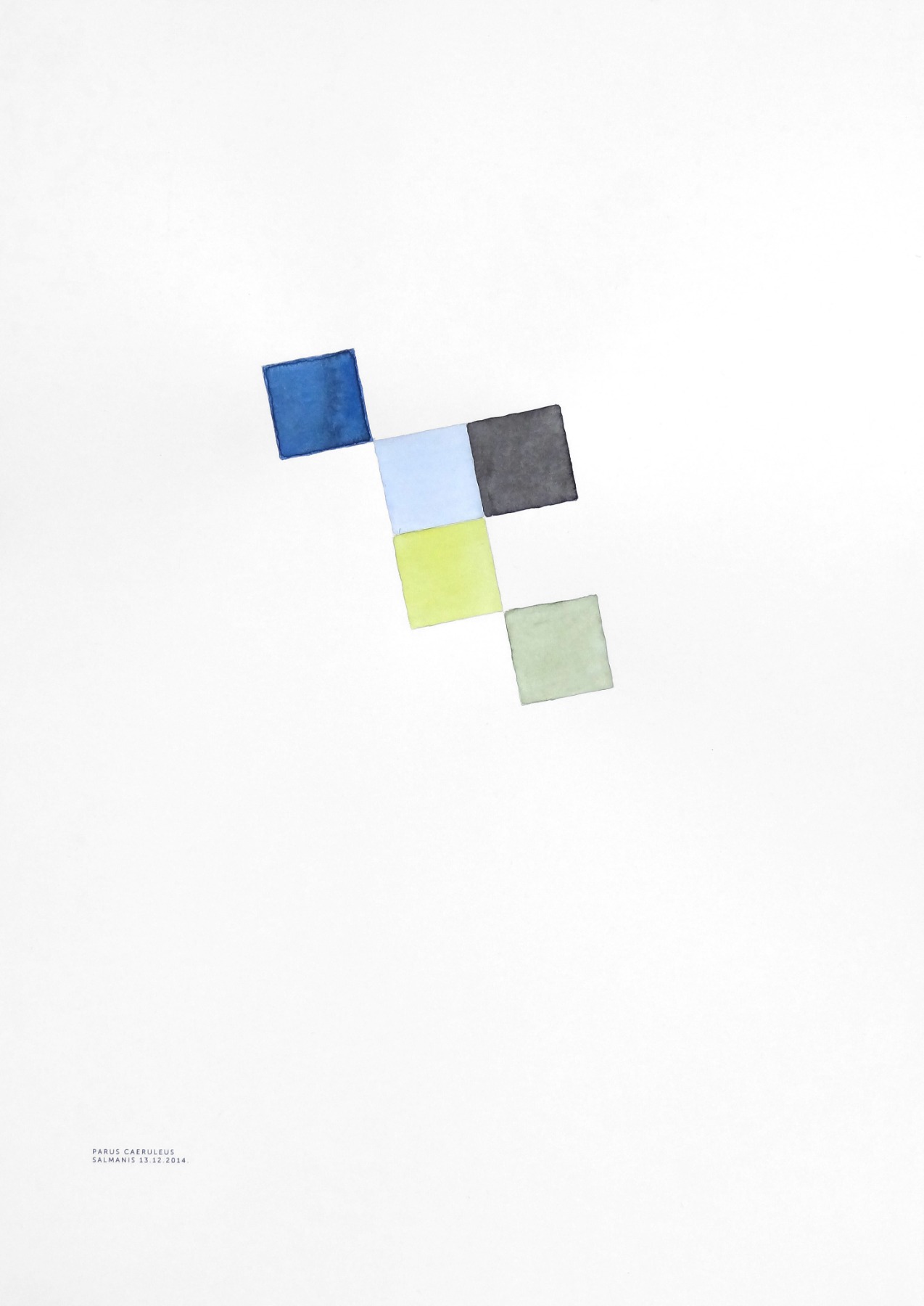
Emotionality, I believe, is not irreconcilable with conceptualism.
Well, yes, that’s the problem. A good work of conceptualism, in my opinion, has to evoke an emotional reaction from the spectator. Michael Craig-Martin’s „An Oak Tree” makes me feel joy rather than the need to ponder over the order of things.